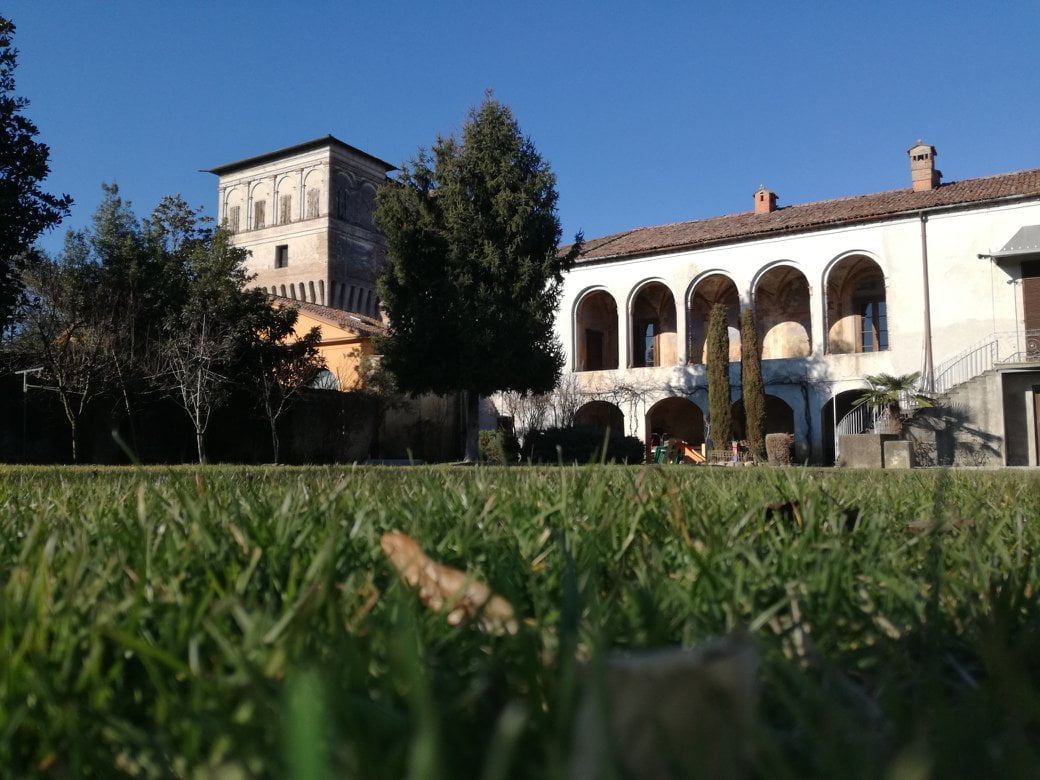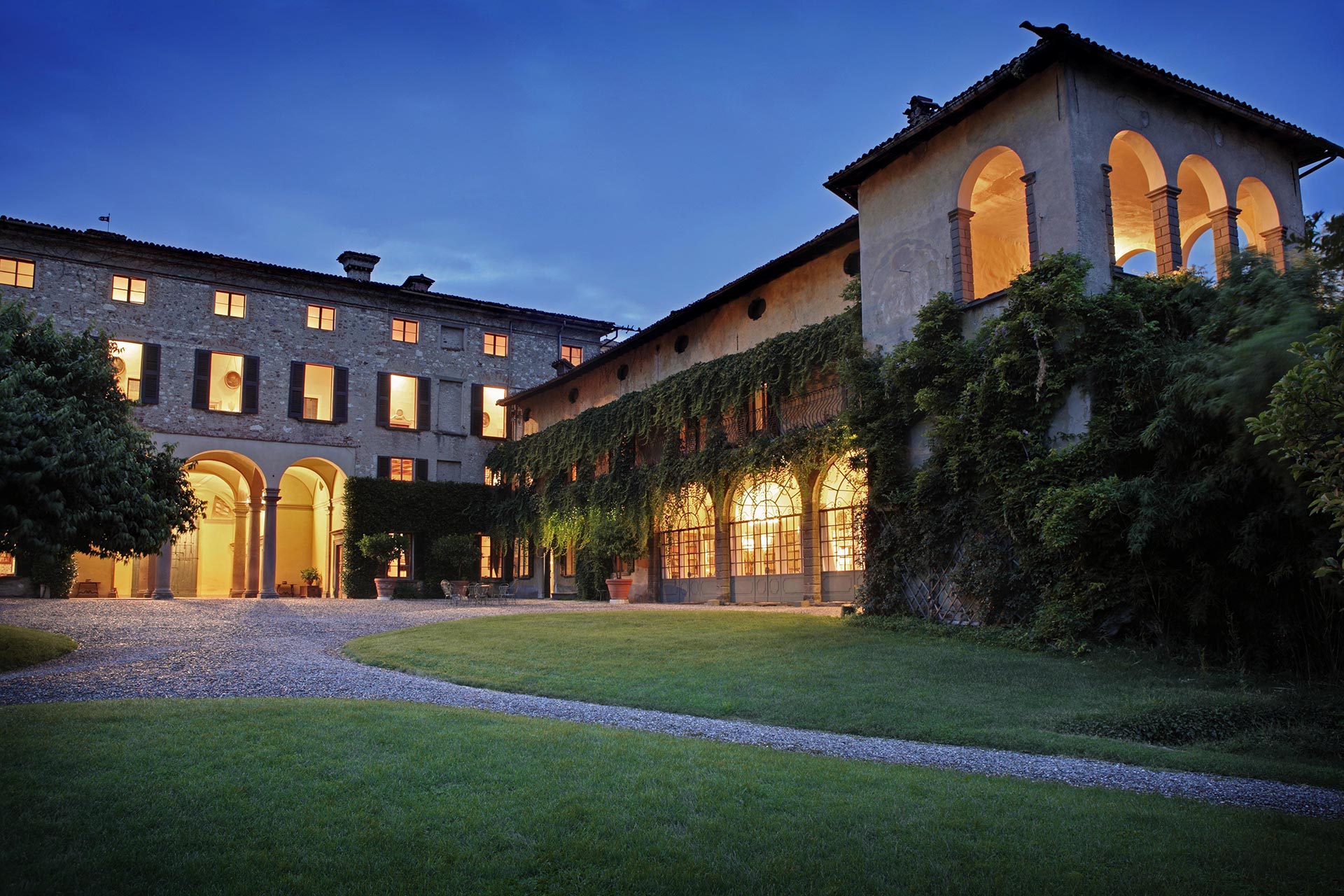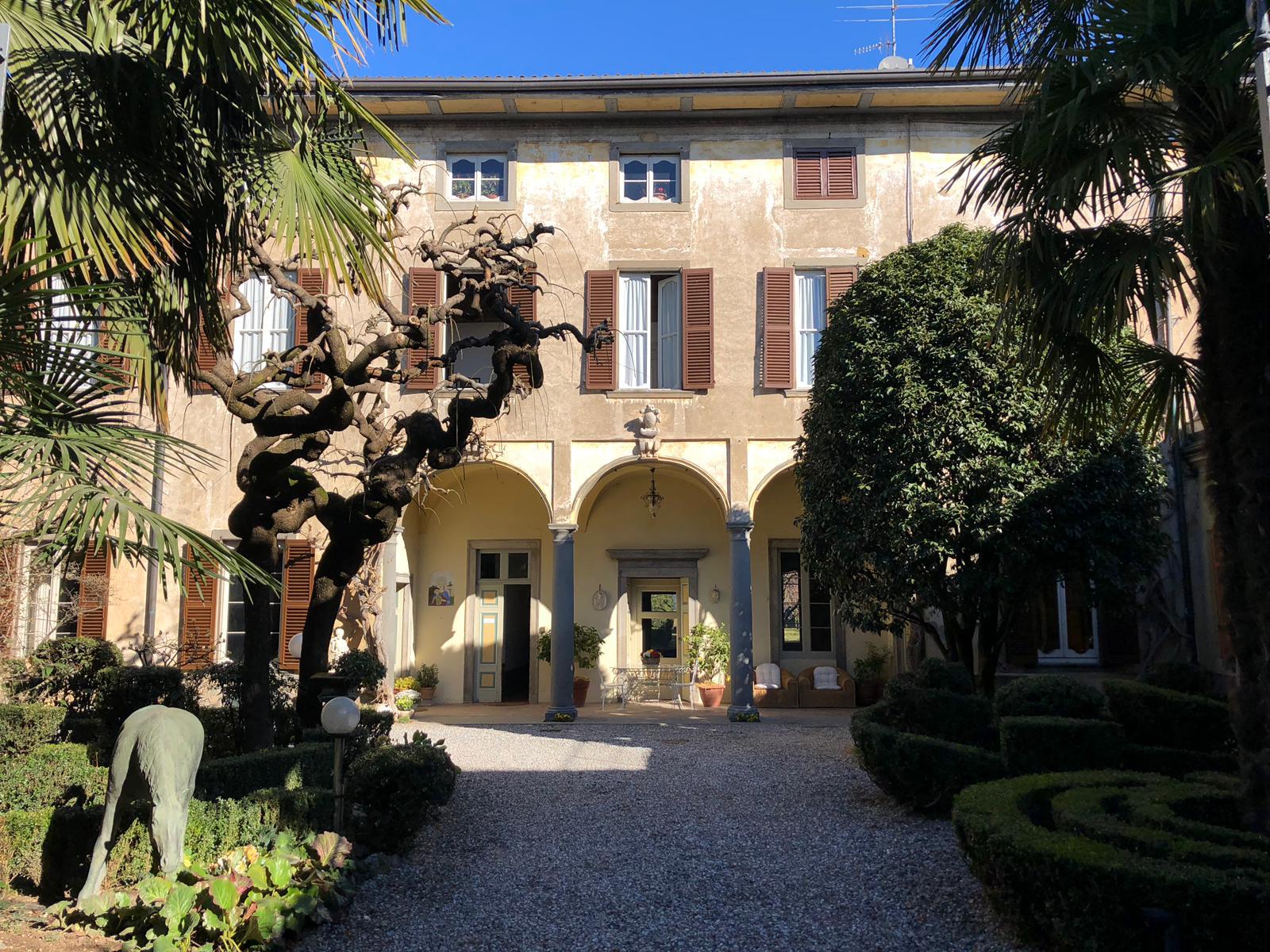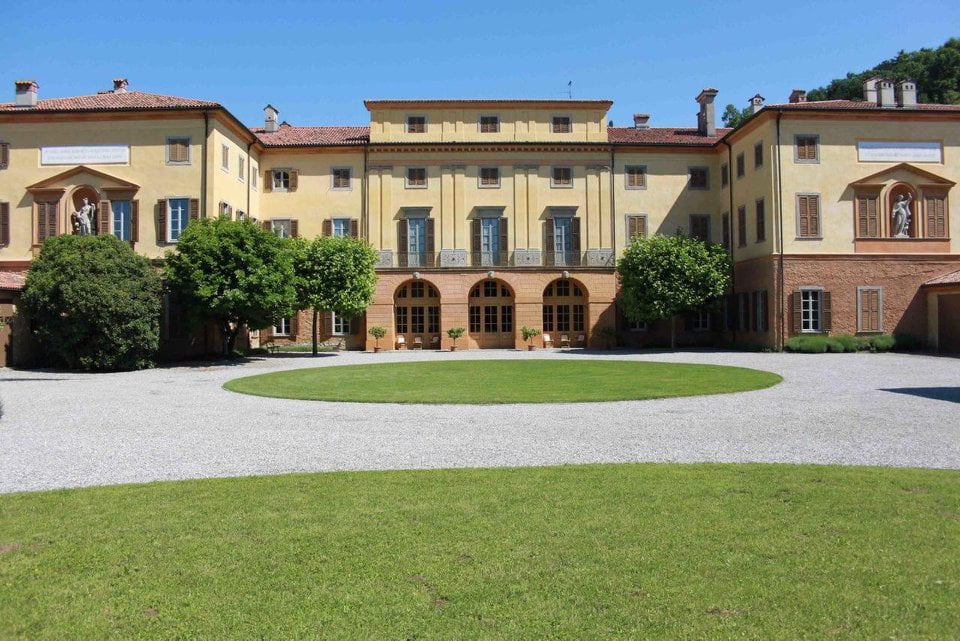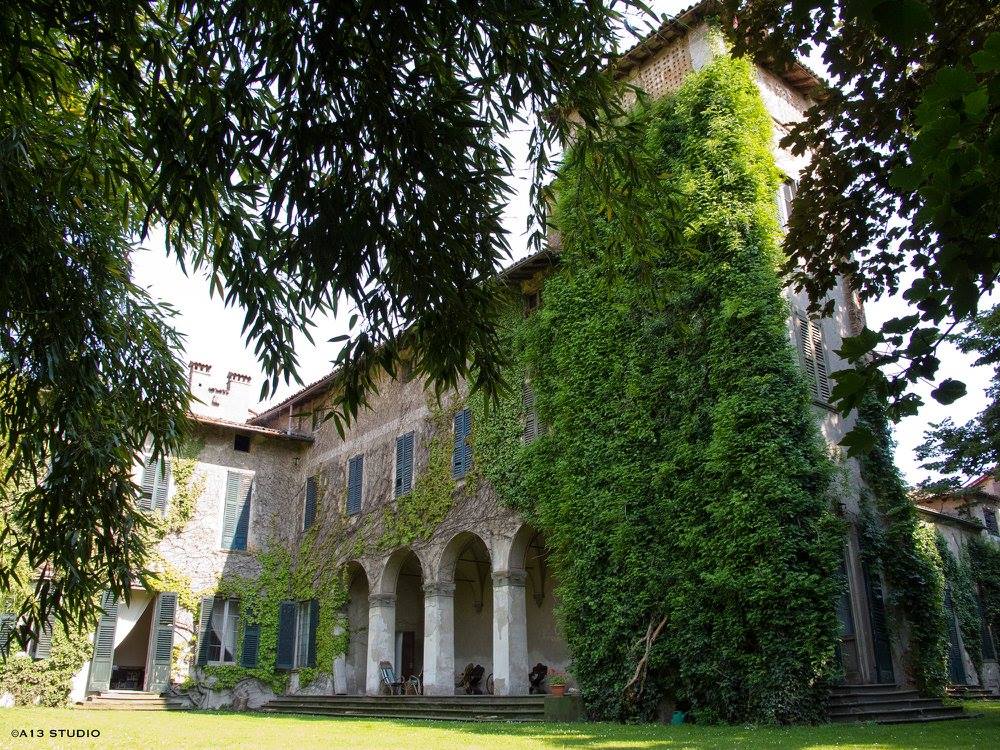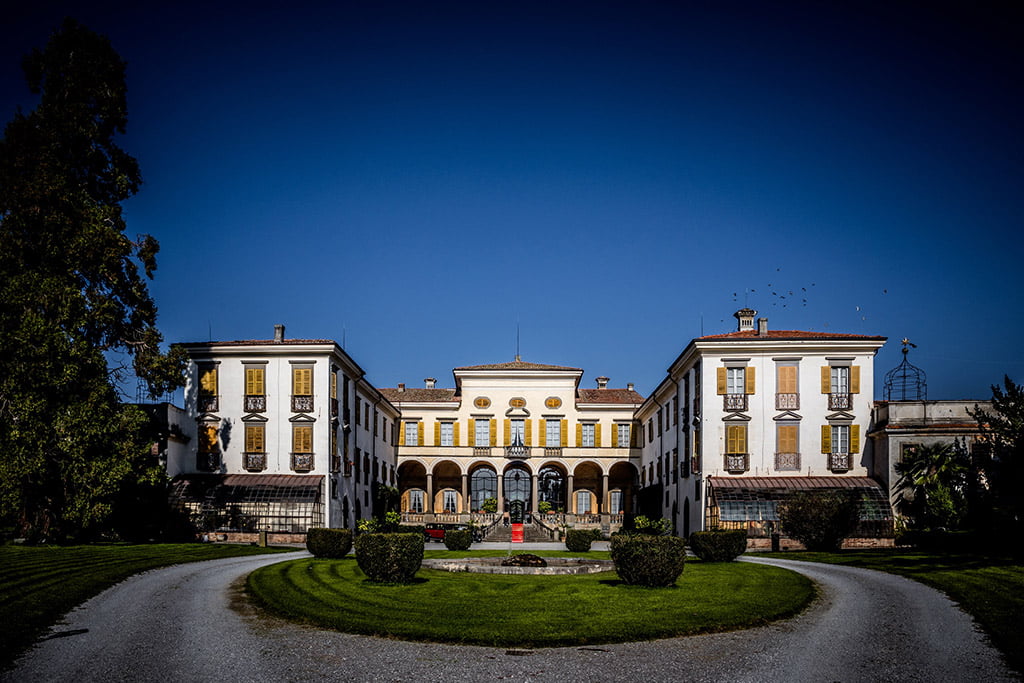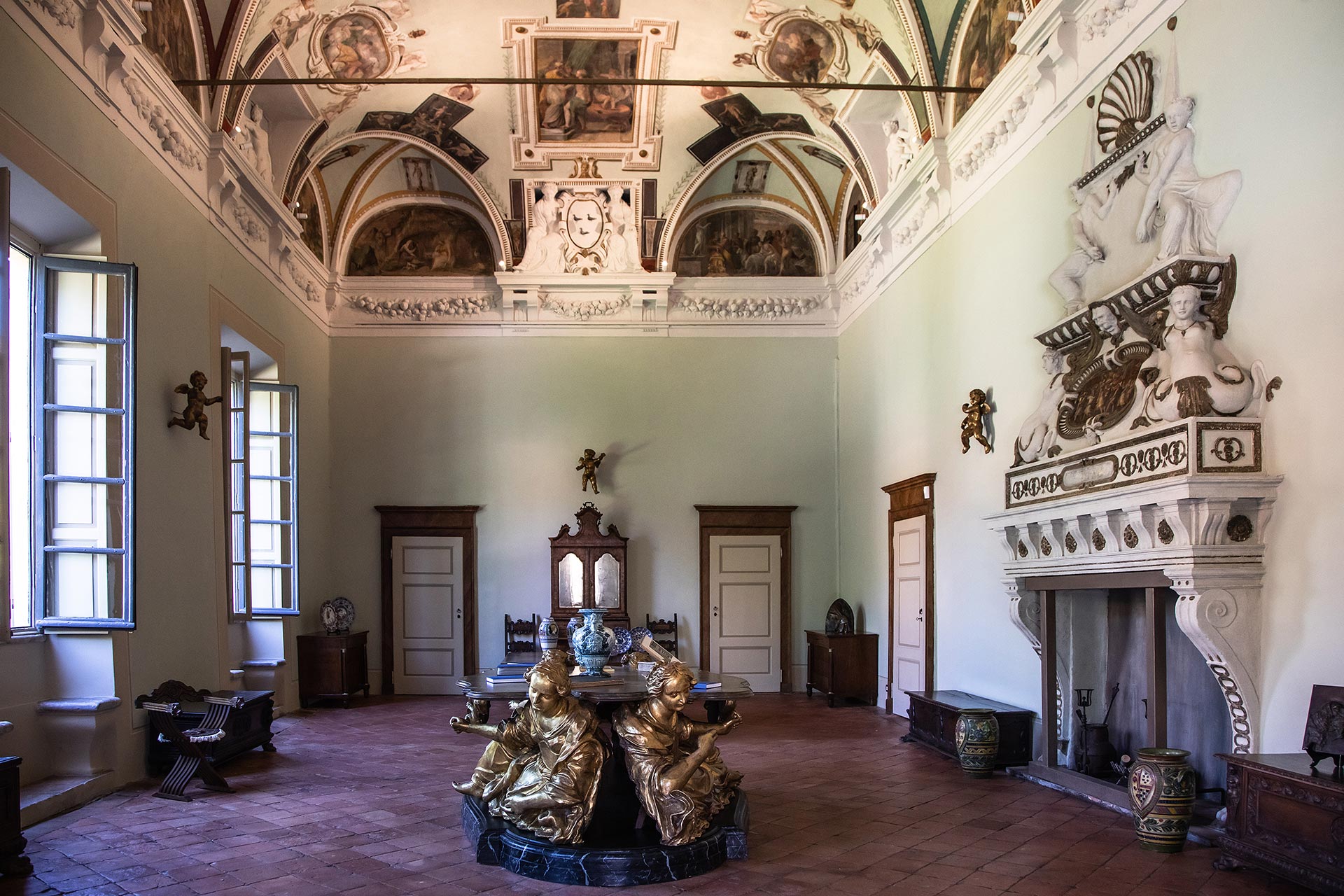Palazzo Oldofredi Tadini Botti began its existence in the second part of the 15th century as the secret summer residence of the Sforza family. Situated in the territory of Calciana at a strategic fortified point on the middle stretch of the River Oglio, which formed the border with Venice the Serenissima, it was used at the time for pastoral feasts and hunting parties. In the 16th century, it was transformed into a palace dedicated to the love story of Apuleius’s myth about Cupid and Psyche. Of particular note are two of the main rooms and the loggia. Both rooms contain 15thcentury wooden coffers and frescoes dating from the 1500s. One houses decorative grotesque-style walls with an interesting pictorial cycle representing Raffaellesque engravings dedicated to Cupid’s story. The second is a former military room displaying landscapes and military/religious settlements which enabled the observer to get their bearings of the surrounding area. Last but not least is the loggia, originally adorned with highly valuable stained-glass windows, which was offered as a dowry by Elisabetta Margherita Sforza, the daughter of Tristano and Beatrice D’Este, to Galeazzo Pallavicino da Busseto, Marquis of the Pallavicino state.
Three frescoes depict Busseto, the Calciana area and Castel S.Angelo as a tribute to Caterina Sforza. The mother of Giovanni delle bande nere (a leading character in Ermanno Olmi’s film), Caterina dominated the political scene of the time and was so influential that she assumed a role of considerable importance in the context of the Italian affairs of the era through to the fall of Charles VIII, and indeed this female protagonist was the embodiment of power and prestige during the period of Sforza domination. In 1473 – when Caterina was only ten years old – she was betrothed in marriage to Girolamo Riario, the nephew of Pope Sixtus IV, and she went on to became an appreciated and highly sought-after intermediary between the Roman and Milanese courts. On the death of Sixtus IV, she decided to take refuge in the fortress of Castel Sant’Angelo with the intention of occupying it on behalf of the governor, her husband. She commanded the soldiers from this stronghold and even threatened the Vatican, forcing the cardinals to reach an agreement with her terms. At the end of 1500, the Oldofredi di Iseo family then came into possession of the Botti Palace in order to exploit the possibility of multiplying the duties levied on the ports and fords of the river Oglio, and taking control of the salt trade.

